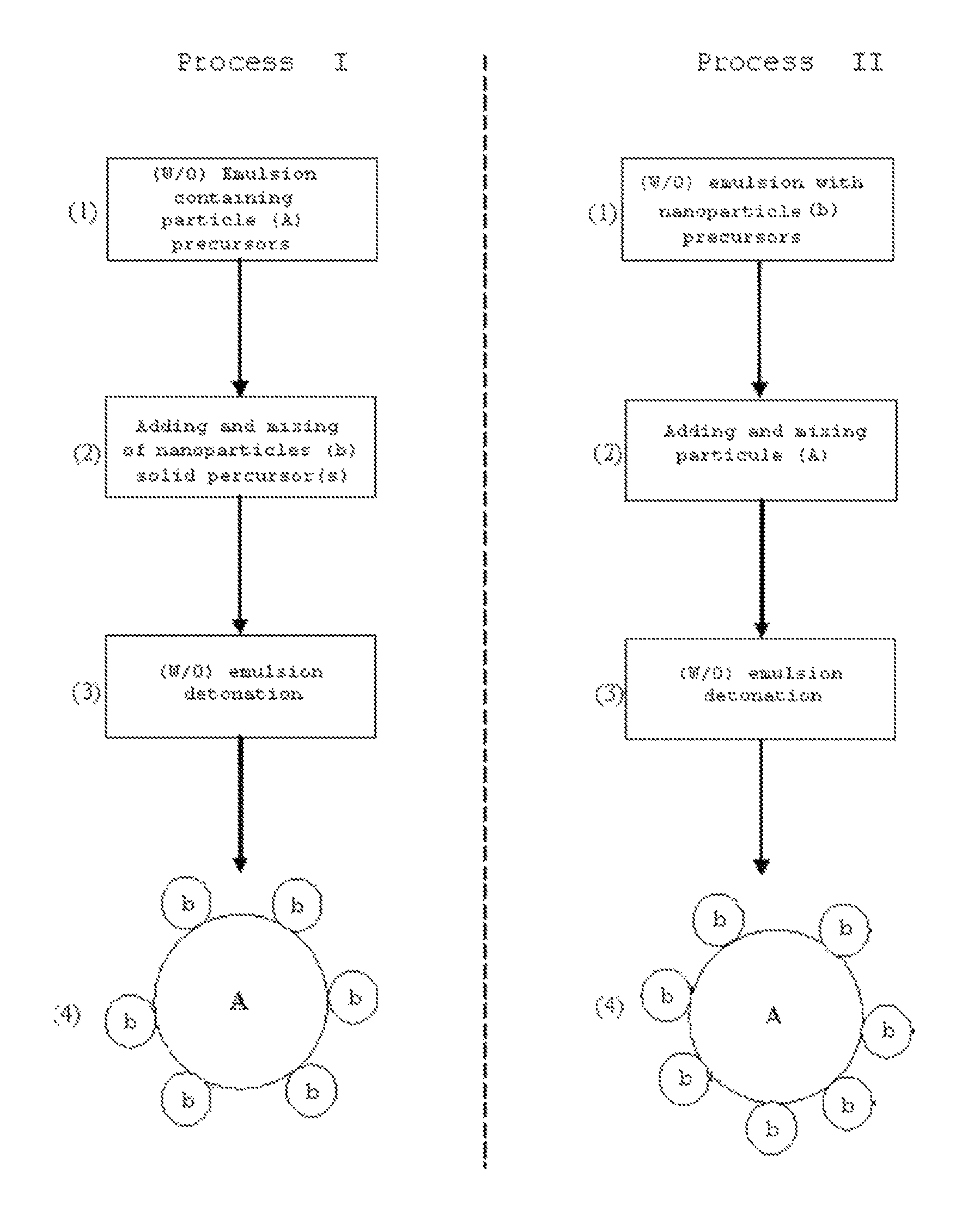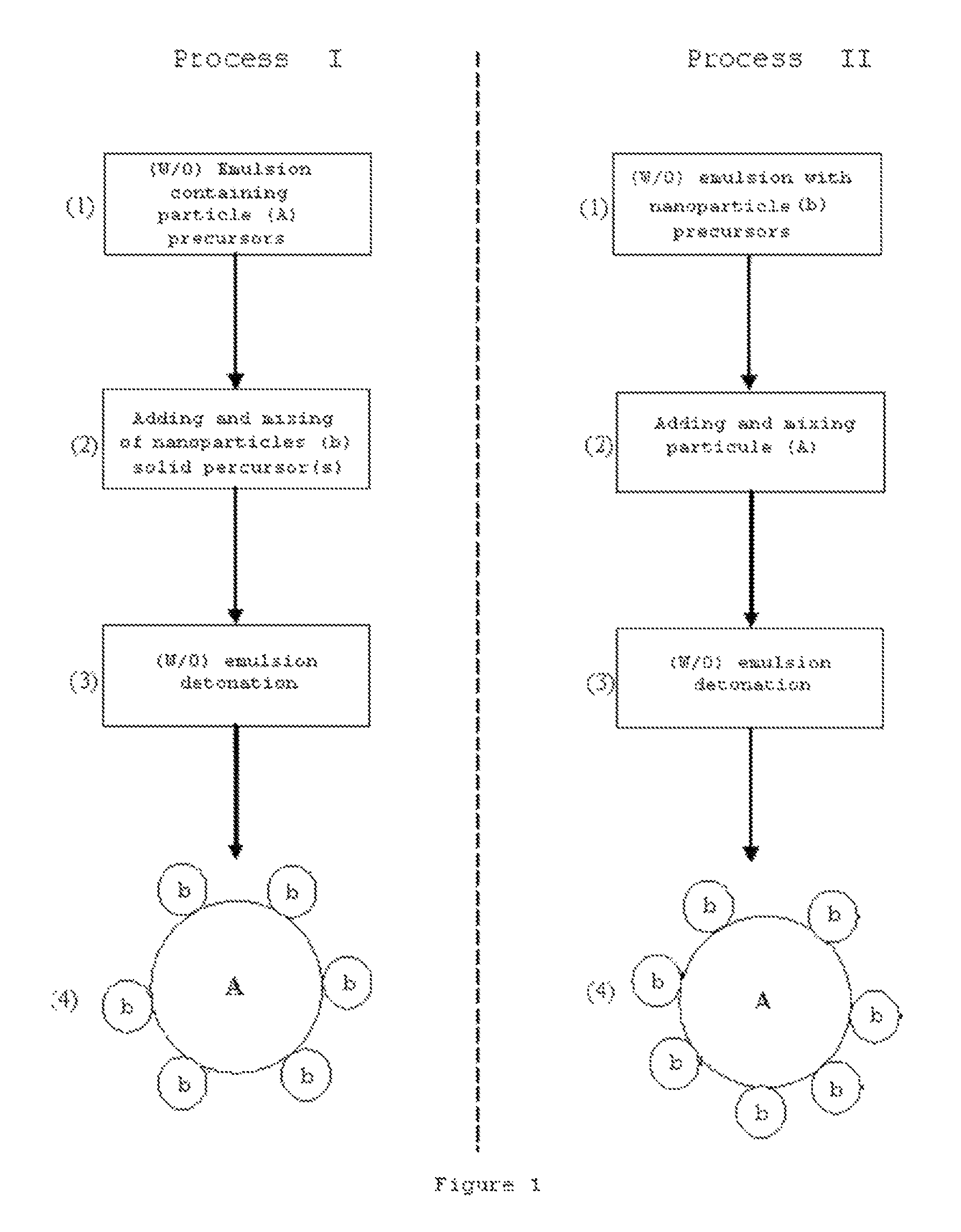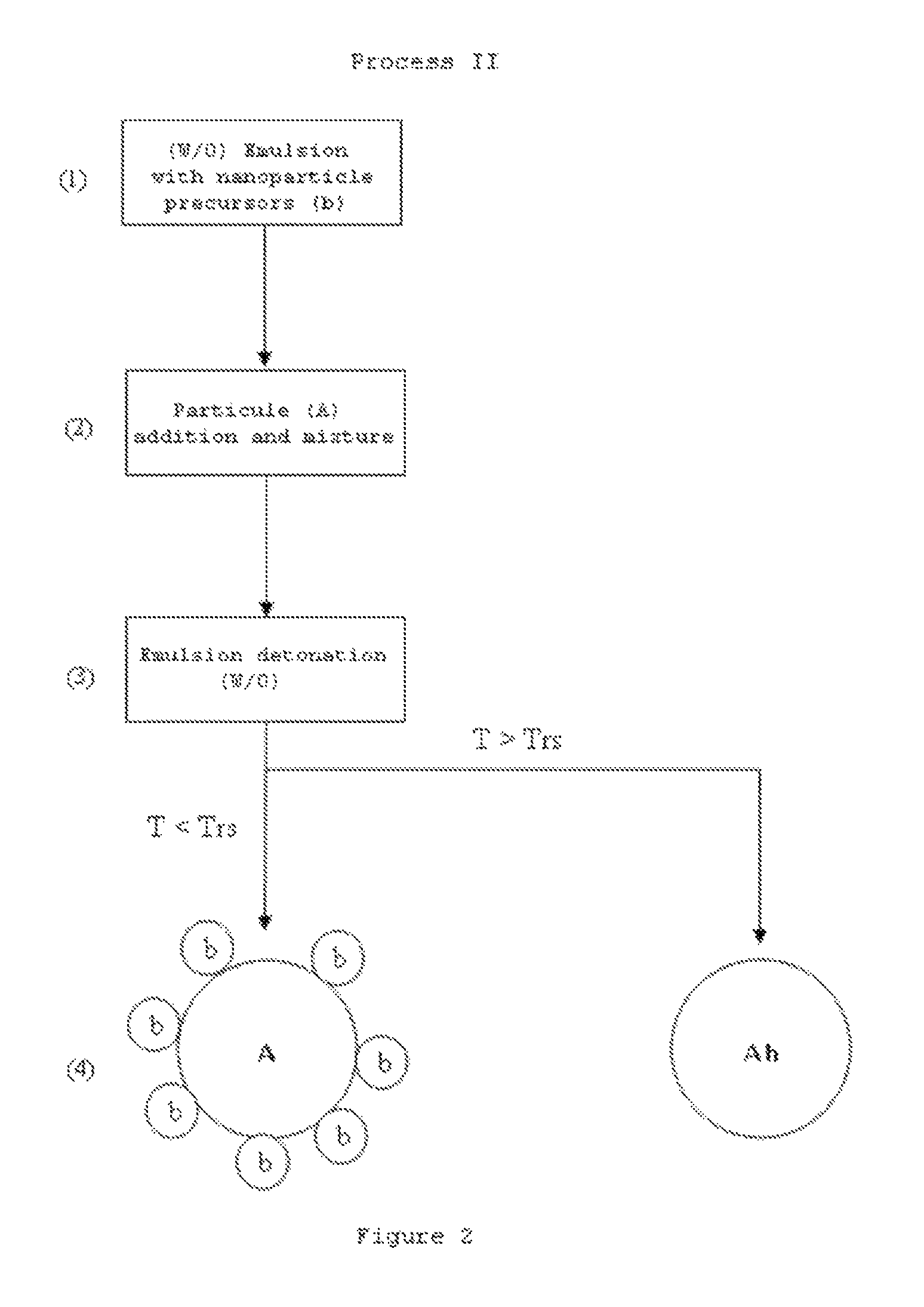Ceramic powders coated with a nanoparticle layer and process for obtaining thereof
a technology of nanoparticles and ceramic powders, which is applied in the field of ceramic powders coated with nanoparticle layers and the process for obtaining thereof, can solve the problems of low production volume and high cost, difficult to obtain uniform coatings, and difficult to obtain homogeneous coatings in the particle layer
- Summary
- Abstract
- Description
- Claims
- Application Information
AI Technical Summary
Benefits of technology
Problems solved by technology
Method used
Image
Examples
example 1
Synthesis of Base Particle and Coating
[0144]Obtaining alumina particles (Al2O3), coated with copper oxide nanoparticles by using aluminium and copper sulphate as precursors in an (W / O) emulsion composition:
[0145]1. A composition with the following components was prepared:[0146]Sensitized W / O emulsion; 80%[0147]Pentahydrated copper Sulphate: 16%[0148]Aluminium (particle size
[0149]1.1. The preparation of the detonable composition was carried out according to the following stages:
[0150]1.1.1. Preparation of the oxidant solution, Internal phase: dissolution of 90% ammonium nitrate in 10% demineralised water in a stirred tank at 100° C.
[0151]1.1.2. Preparation of the external phase: homogeneous mixture of 80% vegetable oil with 20% surfactant.
[0152]1.1.3. Emulsification of external and internal phases: emulsifying in an emulsifier appropriate to the viscosity range, the two phases obtaining an emulsified matrix.
[0153]1.1.4. Preparation of the sensitized W / O emulsion: homogeneous mixture,...
example 2
Previous Placement of the Base Particle in the (W / O) Emulsion
Obtaining Titania (TiO2) Coated with Zinc Oxide (ZnO) nanoparticles
[0157]A composition was prepared comprising the following components:[0158]sensitized W / O Emulsion: 85%[0159]Titania (particle size inferior to 500 nanometers): 15%
[0160]1.1. The preparation of the detonable composition was carried out according to the following stages:
[0161]1.1.1. Preparation of the oxidant solution—Internal phase: dissolution and homogenization of 50% ammonium nitrate with 50% zinc nitrate hexahydrated in a stirred tank at 90° C.
[0162]1.1.2. Preparation of the external phase: homogeneous mixture of 70% vegetable oil with 30% surfactant appropriate for values of about 3.
[0163]1.1.3. Emulsification of the external and internal phases: in an emulsifier adequate to the viscosity range, emulsifying the two phases obtaining an emulsified matrix.
[0164]1.1.4. Preparation of the sensitized W / O emulsion: homogenous mixture, in a mechanically stirre...
example 3
Previous Placement of the Base Particle in the Emulsion (W / O)
[0168]Obtaining non-coated magnesium aluminate (MgAl2O4) (Process II.b) from magnesium oxide (inert) and aluminium.
[0169]A composition was prepared comprising the following components[0170]W / O Emulsion sensitized: 76.6%[0171]Magnesium oxide (Particle Size inferior to 1 micron): 10%[0172]Granulated aluminium (Particle size inferior to 160 microns): 13.4%
[0173]1.1. The preparation of the detonable composition was carried according to the following steps:
[0174]1.1.1. Preparation of the oxidant solution. Internal phase: dissolution and homogenization of 90% of ammonium nitrate with 10% of demineralised water in a stirring tank at 90° C.
[0175]1.1.2. Preparation of the external phase: homogeneous mixture of 80% vegetable oil with 20% surfactant adequate for pH values between 3 and 5.
[0176]1.1.3. Emulsifying the external phase and internal phase: in an emulsifier appropriate to the viscosity range, emulsifying both phases thus ob...
PUM
| Property | Measurement | Unit |
|---|---|---|
| temperature | aaaaa | aaaaa |
| thickness | aaaaa | aaaaa |
| thickness | aaaaa | aaaaa |
Abstract
Description
Claims
Application Information
 Login to View More
Login to View More - R&D
- Intellectual Property
- Life Sciences
- Materials
- Tech Scout
- Unparalleled Data Quality
- Higher Quality Content
- 60% Fewer Hallucinations
Browse by: Latest US Patents, China's latest patents, Technical Efficacy Thesaurus, Application Domain, Technology Topic, Popular Technical Reports.
© 2025 PatSnap. All rights reserved.Legal|Privacy policy|Modern Slavery Act Transparency Statement|Sitemap|About US| Contact US: help@patsnap.com



